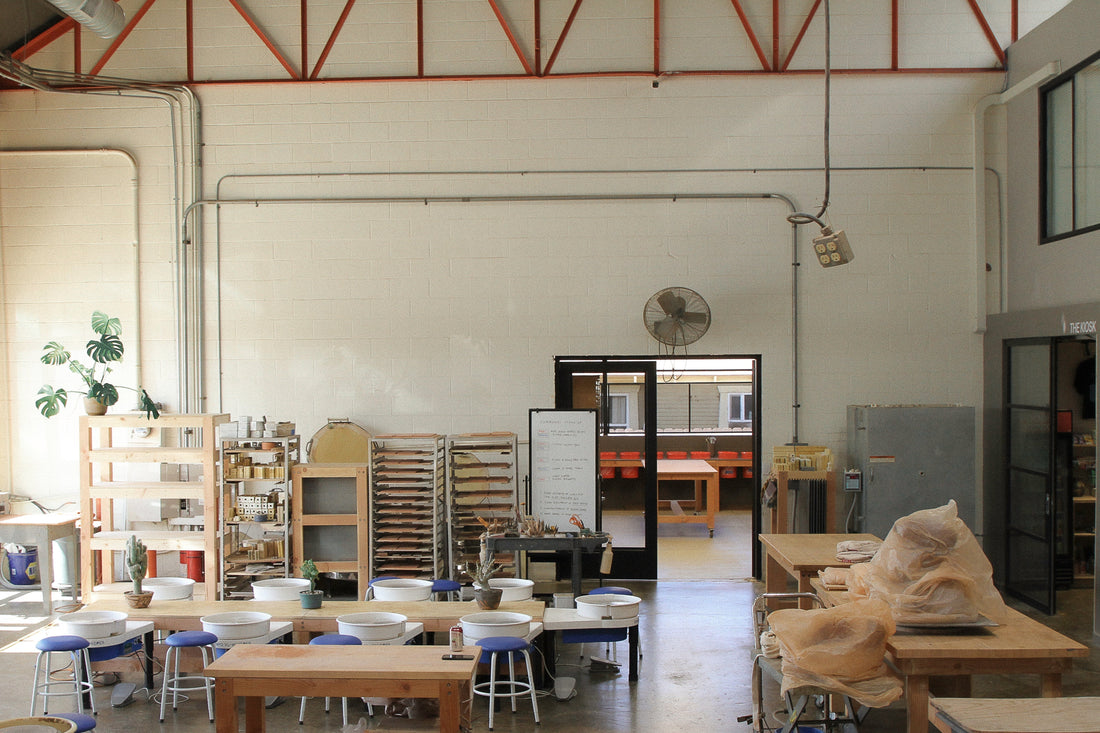
Ceramics And Mindfulness - The Tao of Clay Way
In the West, we’re very focused on the mind as it relates to thinking, and much less on feeling and being embodied. There’s almost an epidemic of disconnection from our physical experience. In a sense, we’re disconnected from ourselves.
Our relationship with ceramics and mindfulness can change that.
After many years of mindfulness practice—and through my training in Hakomi—I had an epiphany: mindfulness is a key ingredient in the ceramic process. I realized how essential it is to making work that feels authentic and true to the person.
Mindfulness brings you into your body, into your direct experience. And in ceramics, that matters - because the truth of what’s happening lives in the body, not in the mind.
Let's Dive In.
Why We Start With Meditation
When I set up the vision and values of Tao of Clay, mindfulness became a foundational principle, it governs both the curriculum and the studio culture.
That’s why in every class, we start with a short five-minute mindfulness meditation. It’s usually a form of Vipassana-style breath meditation, where we pay attention to the breath and gently return our attention when it wanders.
I tell students that working with clay is a kind of meditation in itself. To be successful, you have to be present, fully engaged with your hands, your fingers, your experience, and the material in front of you.
If your attention drifts or you're chatting or thinking about something else—things can quickly spiral out of control at the wheel. The clay reflects your attention back to you.
Why Attention Matters in Ceramics
Giving people a formal practice of attention—even if it’s just five minutes—before we begin can make all the difference in improving your clay practice.
When we learn to make decisions from the body, instead of overthinking, our work becomes a more authentic expression of who we are. The piece becomes a mirror of our internal landscape—not a concept or an intellectual idea.
You might ask yourself:
Do I want to make something larger or smaller? Rounder or more square?
The answers often come not from the head, but from an internal sense, a feeling.
That’s why mindfulness is so essential in the creative process, it helps us bypass the "monkey mind" (as it’s often called in Buddhist practice) and drop into our instincts and impulses.
When we do that, we transcend the surface-level mind and begin to work from a place that is deeper, quieter, and more integrated.
Further Reading On Ceramics and Taoism - Check Our Reading List
What You Make Is How You Live
Something I’ve observed over and over is this: People do clay the same way they do life.
I can learn a lot about someone from how they hold their hands, how they approach the clay, how they react when things don’t go as expected. Their whole nervous system shows up in the studio.
If someone’s hands are tense and their energy is agitated, that pattern usually exists outside the studio too. Clay becomes a hologram of their larger experience.
This is where the transformation happens.
When we change the way we interact with clay—when we slow down, soften, pay attention—we also begin to shift something in ourselves. Not just as artists, but as people.
Start Your Clay Journey By Signing Up For A New Course
Tao of Clay - A Safe Place to Unfold
Ceramics is vulnerable work. You’re creating something from nothing. You’re showing it to the world. And if things don’t go well, the inner critic often shows up fast.
“I’m not good at this.”
“I’m a failure.”
“I don’t belong here.”
Often, students don’t even realize those voices are operating beneath the surface. But if we’re not aware of them, they can derail the creative process entirely. I've seen people walk out because of it.
That’s why we create space at Tao of Clay to name those voices, to shine a light on them. Not to fix or fight them, but to notice them with curiosity. Mindfulness allows us to do that.
The more we bring these limiting beliefs into awareness, the less power they have over us—and the more space we have to play, experiment, and grow.
When Ceramics Work Becomes More Powerful
The more present I am in my own process, the more authentic and powerful my work becomes—not just for me, but for others who experience it. There's an emotional resonance that comes through when the work is made from presence.
You can do ceramics without mindfulness. You can use it to zone out, distract, or even disconnect. Many people do. But we set a different intention at Tao of Clay—to pay attention, not just to the clay, but to ourselves.
And it matters. Because when we bring awareness to our impulses, our frustrations, our little victories and defeats, we’re not just making clay forms. We’re re-patterning the way we relate to the world.
Explore Your Intuition With The Organicity and Clay Workshop
Putting The Pieces Together At Our Clay Studio
Clay gives you a relationship—just like people, just like life. The way things unfold in the studio mirrors the way things unfold elsewhere. Our behaviors aren’t random. They show up in the way we wedge, pull, center, carve.
But we have a choice. With mindfulness, we can interact differently. With intention, we can explore new ways of being. And with clay, we have a safe, forgiving, responsive place to practice that.
At any moment, we can throw the piece in the reclaim bucket and try again. That’s part of the beauty.
Mindfulness in the studio isn’t about getting it right. It’s about showing up fully. With our bodies, heart, and mind - and letting the process shape us as much as we shape the clay.
Apply to Be A Member At Tao Of Clay
